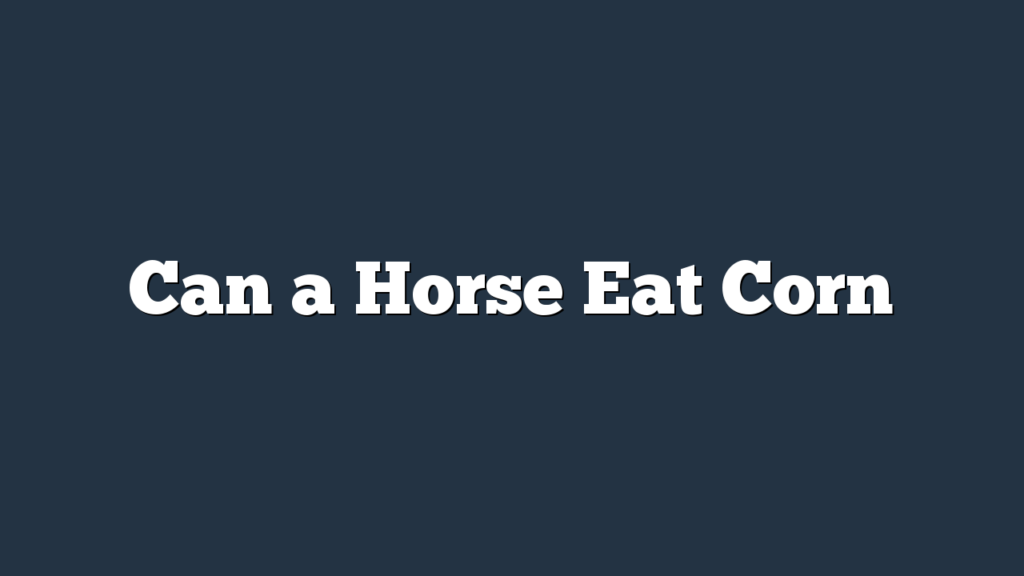Have you ever wondered about the size of a horse’s ‘pp’?
In this article, we’ll explore the average size of a horse’s ‘pp’ and the factors that can affect it. We’ll also compare it to other animals and discuss its role in a horse’s reproductive system.
Additionally, we’ll share some interesting facts, tips on measuring accurately, and address common misconceptions.
Join us as we delve into the importance of a horse’s ‘pp’ in breeding programs.
Average Size of a Horse’s ‘Pp
The average size of a horse’s ‘pp’ is approximately 24 inches. There are several factors that can influence the size of a horse’s ‘pp’.
One of the most common misconceptions is that the size of a horse’s ‘pp’ is directly related to its overall size or breed. However, this isn’t necessarily true. While it’s true that certain breeds may have a tendency to have larger ‘pps’ than others, it isn’t a guarantee.
Other factors that can influence the size of a horse’s ‘pp’ include genetics, age, and overall health. It’s important to note that the size of a horse’s ‘pp’ doesn’t affect its performance or abilities. It’s simply a physical characteristic and doesn’t determine the horse’s worth or value.
Factors That Affect the Size of a Horse’s ‘Pp
Now, let’s explore the factors that influence the size of a horse’s ‘Pp’.
First, genetics plays a significant role, as certain breeds are naturally predisposed to have larger or smaller ‘Pps’. Additionally, variations within breeds can also affect the size, since different bloodlines may have distinct characteristics.
Genetics and Size
Understanding the genetic factors that influence the size of a horse’s ‘pp’ can provide valuable insight into the characteristics of these animals. Genetic factors play a significant role in determining the size variations observed in horses. The size of a horse’s ‘pp’ is primarily determined by its genetics, specifically the genes responsible for growth and development.
These genes can influence the overall size of the horse as well as the size of its reproductive organs. It’s important to note that size variations in a horse’s ‘pp’ aren’t solely determined by genetics, as other factors such as nutrition and environment can also play a role. However, a horse’s genetic makeup is a significant contributing factor to its size, including the size of its ‘pp’.
Breed Variations
You can observe variations in the size of a horse’s ‘pp’ due to different breeds and various factors that affect its size.
When comparing breeds, it’s important to note that there are significant differences in the size of a horse’s ‘pp’. For example, draft horse breeds like the Shire and Clydesdale tend to have larger ‘pps’ compared to lighter breeds like Arabians or Thoroughbreds. This is because draft horses are generally larger overall, with more muscle mass and body weight.
Additionally, factors such as genetics, nutrition, and overall health can also impact the size of a horse’s ‘pp’. It’s essential to consider these breed differences and take them into account when evaluating the size of a horse’s ‘pp’.
Age and Development
As a horse ages and develops, the size of its ‘pp’ can be influenced by various factors such as hormonal changes and the growth of its reproductive organs. Age plays a significant role in determining the size of a horse’s ‘pp’. When a horse is young, its reproductive organs aren’t fully developed, and the ‘pp’ may be smaller in size.
As the horse grows and matures, its reproductive organs undergo growth and development, resulting in an increase in size. Hormonal changes also occur during this process, which further contributes to the enlargement of the ‘pp’. It’s important to note that the size of a horse’s ‘pp’ can vary among individuals, even within the same age group.
Factors such as genetics and overall health can also influence the size of a horse’s ‘pp’.
How Does a Horse’s ‘Pp’ Compare to Other Animals
The size of a horse’s ‘pp’ can vary greatly compared to other animals. When it comes to horse anatomy, their reproductive system is quite unique. Male horses, or stallions, have a penis that’s relatively large in size. It’s important to note that the size of a horse’s ‘pp’ can differ depending on the individual horse. On average, a horse’s penis can range from 18 to 24 inches in length and can weigh up to 4 pounds. This makes it one of the largest penises among land mammals.
In comparison to other animals, the horse’s ‘pp’ is significantly larger. For instance, the average size of a human penis is around 5 to 6 inches in length. In contrast, the horse’s ‘pp’ is much longer and thicker. Additionally, when compared to other large mammals like elephants and whales, the horse’s ‘pp’ still stands out in terms of size.
The reason behind the horse’s large ‘pp’ can be attributed to their evolutionary history and mating strategies. Horses are polygamous animals, meaning that males mate with multiple females. Having a larger ‘pp’ allows stallions to effectively mate with multiple mares and increase their chances of reproductive success.
The Role of the ‘Pp’ in a Horse’s Reproductive System
Male horses have a vital role in their reproductive system, as their large ‘pp’ enables them to effectively mate with multiple mares and increase their chances of reproductive success. The ‘pp’, or penis, plays a crucial role in the process of reproduction in horses. It is responsible for delivering the semen into the mare’s reproductive tract, allowing for fertilization to occur. The size of the ‘pp’ is an important factor in determining a horse’s reproductive performance.
Genitalia development in horses is influenced by various factors, including genetics and hormones. During puberty, male horses experience significant growth and development of their reproductive organs, including the ‘pp’. This development is necessary for successful mating and reproduction. The size and functionality of the ‘pp’ can impact a horse’s ability to effectively breed with mares.
To illustrate the diversity in genitalia size among different horse breeds, consider the following table:
| Horse Breed | Average ‘Pp’ Length (inches) |
|---|---|
| Thoroughbred | 24 |
| Quarter Horse | 22 |
| Arabian | 20 |
| Draft Horse | 26 |
As seen in the table, different breeds exhibit variations in ‘pp’ size. It is important to note that while size may vary, the ability to successfully reproduce is not solely dependent on the size of the ‘pp’. Factors such as fertility, libido, and overall reproductive health also play significant roles in a horse’s reproductive performance.
Interesting Facts About the Size and Shape of a Horse’s ‘Pp
Did you know that the size and shape of a horse’s ‘pp’ can vary greatly among different breeds? It’s true! Here are some interesting facts about the size and shape of a horse’s ‘pp’:
- Variations in Length: The length of a horse’s ‘pp’ can range from around 20 to 100 centimeters, depending on the breed. Larger horse breeds tend to have longer ‘pps’, while smaller breeds have shorter ones.
- Girth and Diameter: The girth and diameter of a horse’s ‘pp’ can also vary. Thicker ‘pps’ are more common in draft horse breeds, while thinner ones are found in lighter horse breeds.
- Curvature: The shape of a horse’s ‘pp’ can be straight or slightly curved. Some breeds, like the Arabian horse, are known for their naturally arched ‘pps’.
Understanding the size and shape of a horse’s ‘pp’ is important for studying horse anatomy and the reproductive system. These variations among different breeds highlight the incredible diversity within the equine world.
How to Measure a Horse’s ‘Pp’ Accurately
To measure a horse’s ‘Pp’ accurately, there are correct measuring techniques that you should follow. By ensuring that you use the proper tools, such as a measuring tape or ruler, and taking the measurements in a consistent and precise manner, you can obtain accurate results.
This will provide you with reliable information about the size and shape of a horse’s ‘Pp’.
Correct Measuring Techniques
When measuring a horse’s ‘Pp’ accurately, it’s important to understand the correct techniques involved. To ensure precise measurements, follow these steps:
- Use the correct measuring equipment:
- Use a flexible tape measure specifically designed for measuring horse’s ‘Pp’.
- Make sure the tape measure is long enough to reach from the base to the tip of the ‘Pp’.
- Avoid potential errors in measurement:
- Ensure the horse is standing square and relaxed.
- Make sure the horse’s ‘Pp’ is in a natural, flaccid state for accurate measurement.
- Take multiple measurements to minimize errors caused by movement or variations in size.
Ensuring Accurate Measurements
To ensure accurate measurements of a horse’s ‘Pp’, follow these techniques while using the correct measuring equipment.
First, make sure the horse is relaxed and standing squarely on all four legs. This will help you get an accurate measurement without any distortion.
Next, use a measuring tape or ruler with clear markings to measure the length of the ‘Pp’. Start from the point where the ‘Pp’ emerges from the horse’s body and measure along the top curve to the tip.
Be careful not to pull or stretch the ‘Pp’ while measuring, as this can give you an inaccurate result.
Finally, repeat the measurement a few times to ensure consistency and accuracy.
Common Misconceptions About the Size of a Horse’s ‘Pp
Despite popular belief, there are many misconceptions about the actual size of a horse’s ‘pp’. While horse anatomy and horse reproduction are complex topics, it’s important to debunk some of the common myths surrounding the size of this particular organ. Here are three misconceptions that need to be addressed:
- Size correlation with body size: Contrary to popular belief, the size of a horse’s ‘pp’ doesn’t directly correlate with its body size. Just like humans, horses come in different shapes and sizes, and their reproductive organs vary as well. Size is determined by a variety of factors, including genetics and individual variation.
- Perceptions based on appearance: The external appearance of a horse’s ‘pp’ can be deceiving. The actual size of the organ extends beyond what’s visible externally. It’s important to remember that a horse’s ‘pp’ is retractable and can vary in size and appearance depending on factors such as arousal or temperature.
- Misunderstanding of function: The size of a horse’s ‘pp’ doesn’t necessarily determine its reproductive capabilities. The primary function of the organ is to deliver semen during mating, and even horses with smaller ‘pps’ can still successfully reproduce.
The Importance of a Horse’s ‘Pp’ in Breeding Programs
In breeding programs, the size of a horse’s ‘pp’ plays a crucial role. A larger ‘pp’ is generally associated with higher fertility rates, as it allows for better semen deposition and increased chances of successful mating. This is because a larger ‘pp’ can deliver a higher volume of semen, which contains the sperm needed for fertilization.
The size of a horse’s ‘pp’ also affects the mare’s ability to conceive. A larger ‘pp’ can better stimulate the mare’s reproductive tract, increasing the chances of successful fertilization. Additionally, a larger ‘pp’ can provide better coverage of the mare’s cervix, ensuring the delivery of semen closer to the site of fertilization.
Breeding programs aim to maximize the chances of successful breeding and produce quality offspring. Therefore, considering the size of a horse’s ‘pp’ is essential when selecting sires and evaluating their potential for successful breeding. It’s important to note that while the size of a horse’s ‘pp’ is a factor in breeding success, it isn’t the sole determinant. Other factors, such as semen quality and overall reproductive health, also play significant roles.
However, the size of a horse’s ‘pp’ remains an important consideration in breeding programs.
Frequently Asked Questions
Can a Horse’s ‘Pp’ Size Change Over Time?
Yes, a horse’s ‘pp’ size can change over time. Factors such as age and genetics can influence the size of a horse’s ‘pp’. It’s important to note that the size can vary among individual horses.
Is There a Correlation Between a Horse’s Size and the Size of Its ‘Pp’?
In horse anatomy, there is a correlation between a horse’s size and the size of its ‘pp’. The larger the horse, the larger its ‘pp’ tends to be. This can be important in horse breeding.
How Does the Size of a Horse’s ‘Pp’ Compare to That of a Bull?
When comparing the size of a horse’s ‘pp’ to that of a bull, it’s important to note that both animals have variations. However, in general, a bull’s ‘pp’ tends to be larger than a horse’s ‘pp’.
Can the Size of a Horse’s ‘Pp’ Affect Its Fertility?
The size of a horse’s ‘pp’ can affect its fertility. Horse breeding techniques take into account genetic factors, and a smaller size might impact the horse’s ability to successfully breed.
Are There Any Health Issues Associated With a Horse Having a Particularly Large or Small ‘Pp’?
Having a particularly large or small ‘pp’ can pose health risks for horses, affecting breeding capabilities. It’s important to be aware of any potential issues and consult with a veterinarian for guidance.
Conclusion
In conclusion, the size of a horse’s ‘pp’ can vary, but on average, it’s quite large compared to other animals. Factors such as genetics, age, and health can affect its size.
The ‘pp’ plays a crucial role in a horse’s reproductive system and is essential for successful breeding programs. While there may be some misconceptions surrounding its size, accurate measurement techniques can provide valuable information.
Overall, the ‘pp’ is an interesting and important aspect of a horse’s anatomy.



